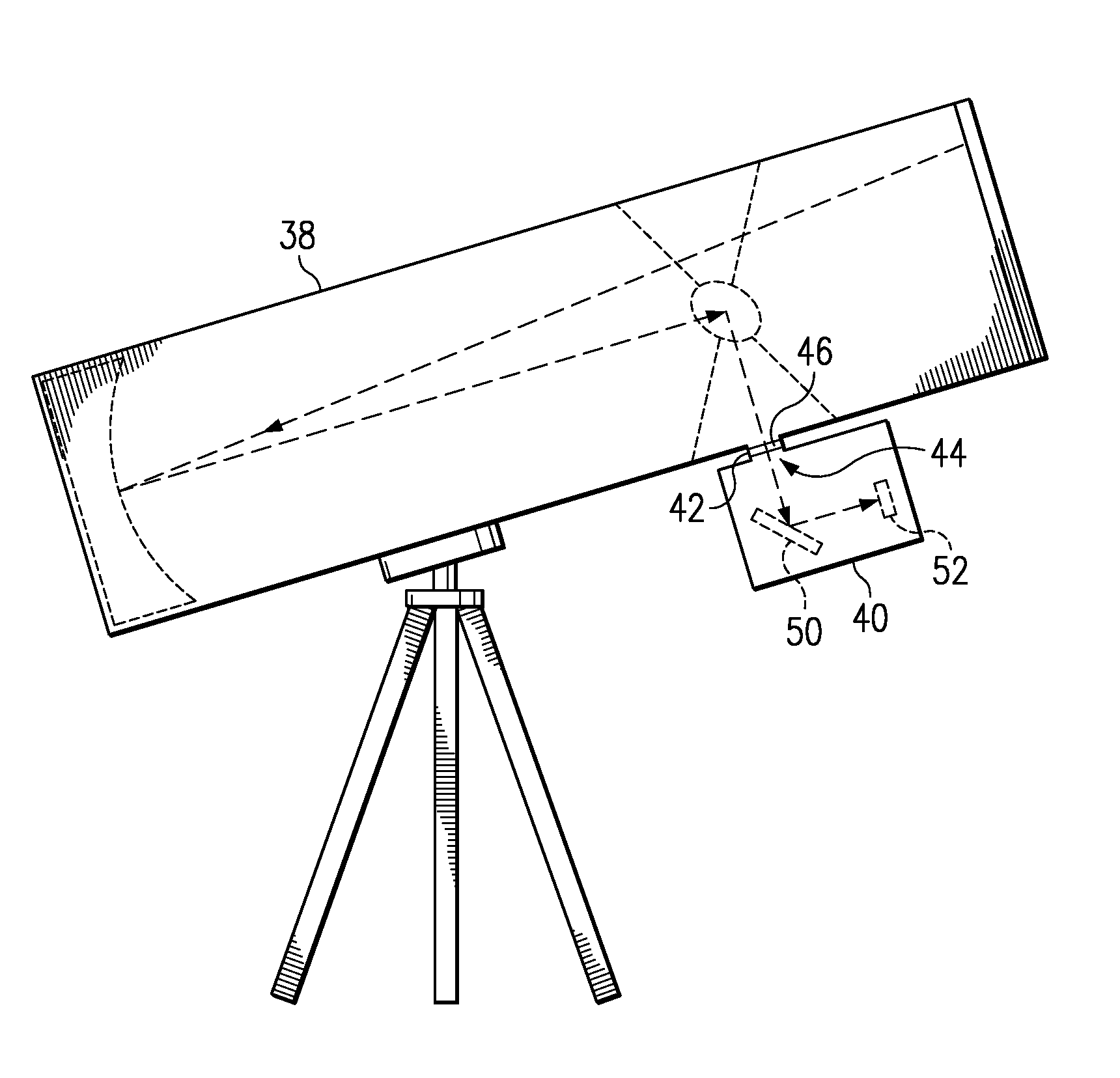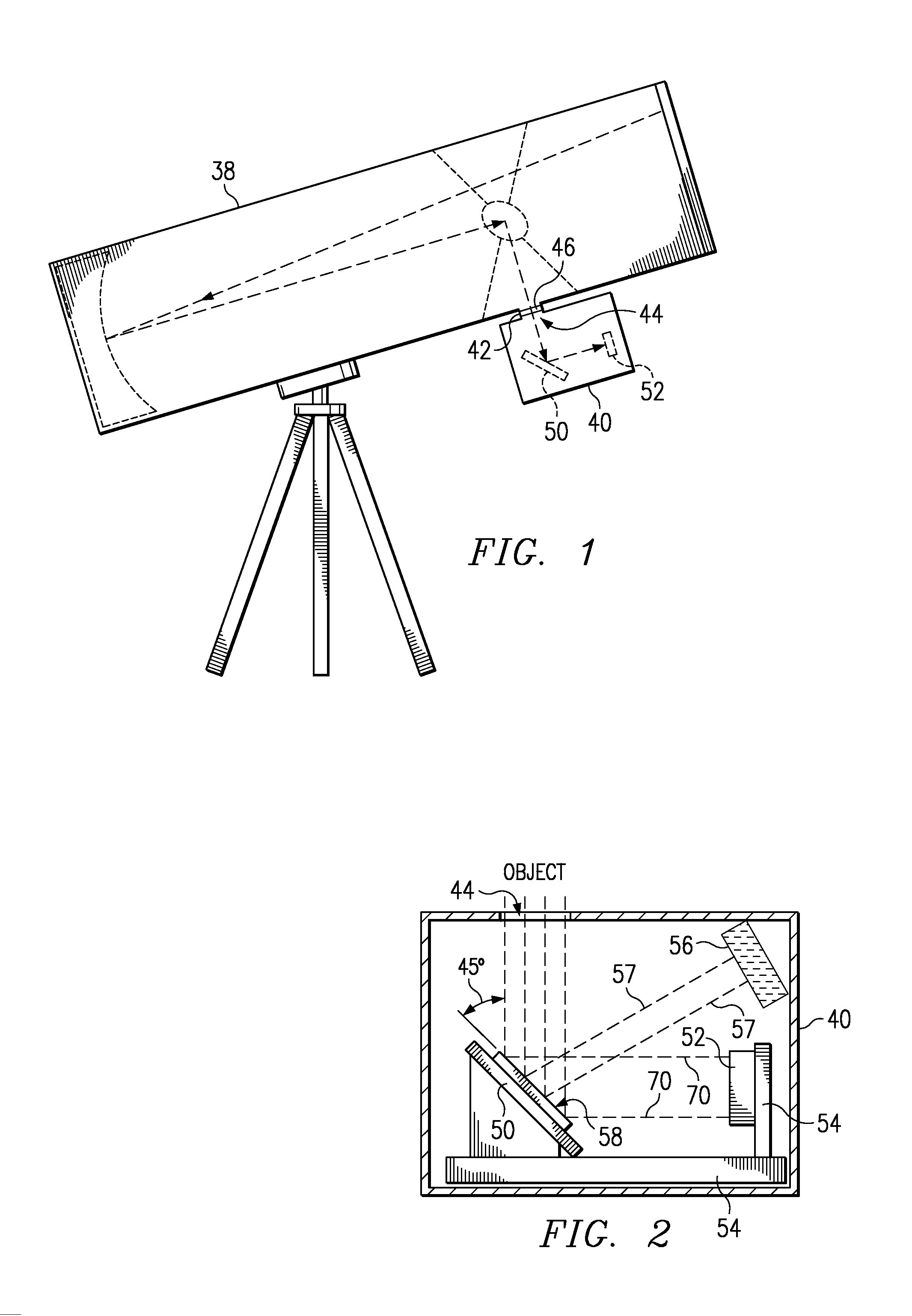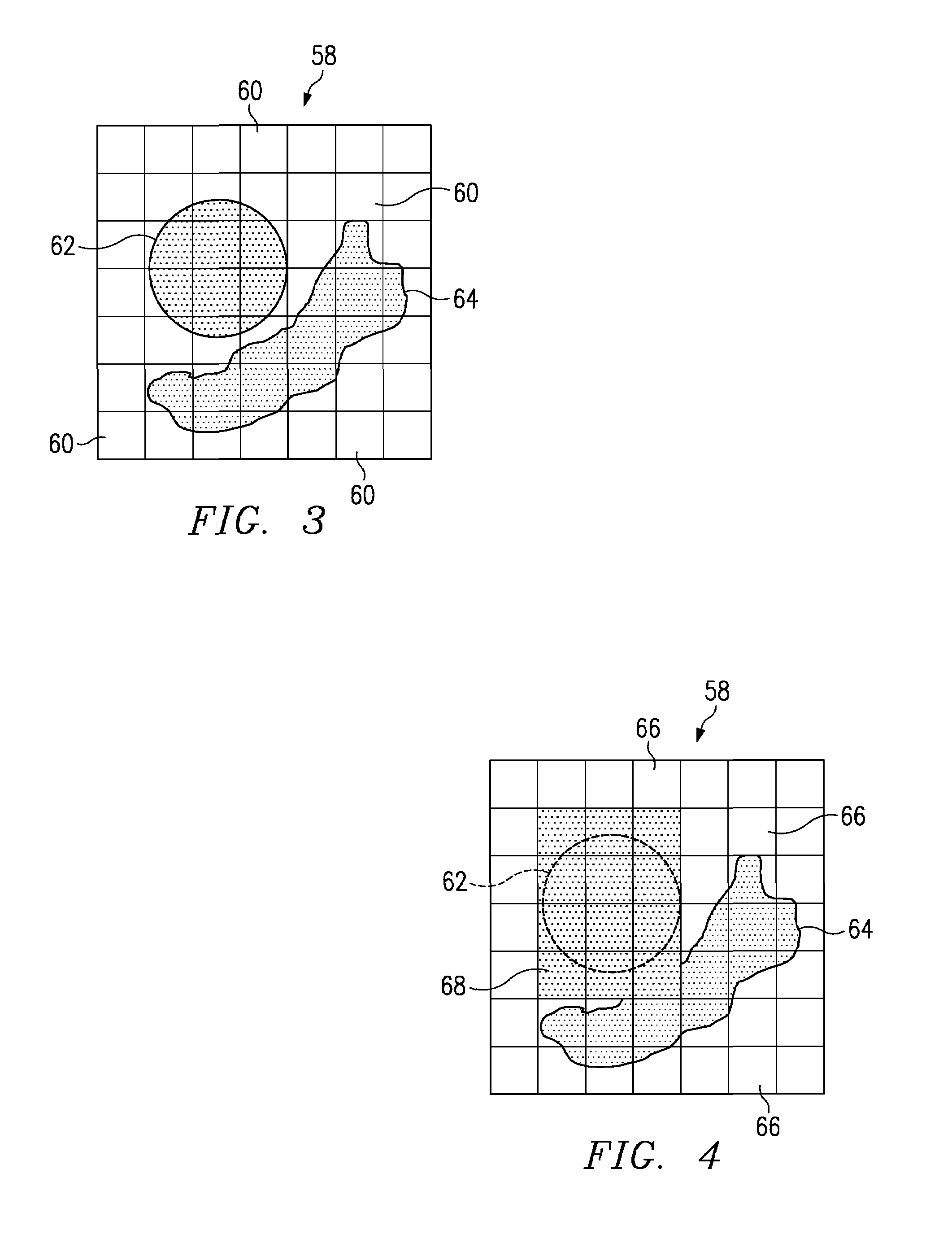System and method for varying exposure time for different parts of a field of view while acquiring an image
a technology of exposure time, applied in the field of system and method for varying exposure time for different parts of a field of view while acquiring an image, can solve the problems of difficult to obtain an bleeding or streaking into the immediate surrounding area, and the problem of obtaining a good image of a more faint object adjacent to a bright object still persists, so as to increase the resolution of masking the image
- Summary
- Abstract
- Description
- Claims
- Application Information
AI Technical Summary
Benefits of technology
Problems solved by technology
Method used
Image
Examples
first embodiment
[0033]Referring to FIG. 2, the device 40 comprises a spatial light modulator (SLM) device 50 and an image capturing device 52. In the first embodiment, the SLM device 50 is a digital micro-mirror device (DMD) (DMDs are also sometimes known as a deformable mirror devices). There are many different types and designs of SLM devices, including but not limited to: DMDs, such as those developed by Texas Instruments, Inc.; anti-reflective membrane (AR membrane) devices, such as those developed by AT&T Bell Labs; and deformable film membrane devices, for example.
[0034]There are many different designs for DMDs that may be used in an embodiment of the present invention. Preferably, the DMD 50 can independently actuate mirror elements between a first position and a second position. The DMD 50 may also have the capability to actuate the mirror elements to more than two positions or oscillate the mirror elements. The image capturing device 52 in the first embodiment is a CCD (charge-coupled devi...
second embodiment
[0064]In the second embodiment, the first DMD 50 is identical to the second DMD 170, and both have an array of movable micro-mirror elements 60 on their faces 58, 174. However in other embodiments, the first and second DMDs 50, 170 may not be identical. FIG. 18 shows the face 174 of the second DMD 170 superimposed onto the face 58 of the first DMD 50, as aligned by the image rays and as would be seen from the CCD 52. In FIG. 18, the shaded squares 176 represent the mirror elements on the first DMD face 58 that are tilted to a second position to mask the portions of the image 172 striking the mirror elements 176 tilted to the second position (see reflections of image light rays 172 in FIG. 16). In FIG. 19, the darker shaded squares 178 represent the mirror elements on the second DMD face 174 that are tilted to a second position to mask the portions of the image 173 reflected from the first DMD 50 that strike the mirror elements 178 tilted to the second position (see reflections of im...
third embodiment
[0066]FIG. 20 shows a device 40 in accordance with the present invention, in which the device 40 uses three DMDs 50, 170, 180 and one CCD 52. The second DMD 170 is shifted relative to the first DMD 50, and the third DMD 180 is shifted relative to the second DMD 170. Thus, the resolution may be further enhanced by adding the third DMD 180. FIGS. 21–23 illustrate the faces 58, 174, 182 of the three DMD elements 50, 170, 180, respectively, of FIG. 20 superimposed upon each other, as aligned by the image rays and as seen from the CCD. Although not shown, other embodiments may have four, five, or more DMDs to still further increase the resolution. However, at some point the expense of multiple DMDs and / or the increase in complexity of the device 40 versus the benefit, will likely create a practical limit to the number of desired DMDs to be used in a device 40.
[0067]The present invention also may be incorporated in other embodiments for use in a variety of other ways outside the field of ...
PUM
 Login to View More
Login to View More Abstract
Description
Claims
Application Information
 Login to View More
Login to View More - R&D
- Intellectual Property
- Life Sciences
- Materials
- Tech Scout
- Unparalleled Data Quality
- Higher Quality Content
- 60% Fewer Hallucinations
Browse by: Latest US Patents, China's latest patents, Technical Efficacy Thesaurus, Application Domain, Technology Topic, Popular Technical Reports.
© 2025 PatSnap. All rights reserved.Legal|Privacy policy|Modern Slavery Act Transparency Statement|Sitemap|About US| Contact US: help@patsnap.com



